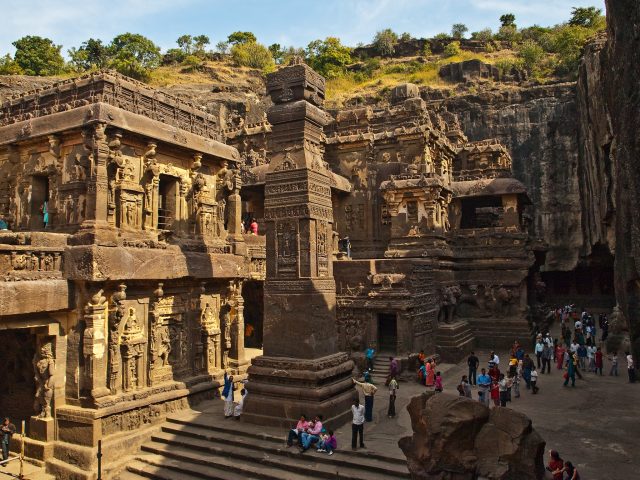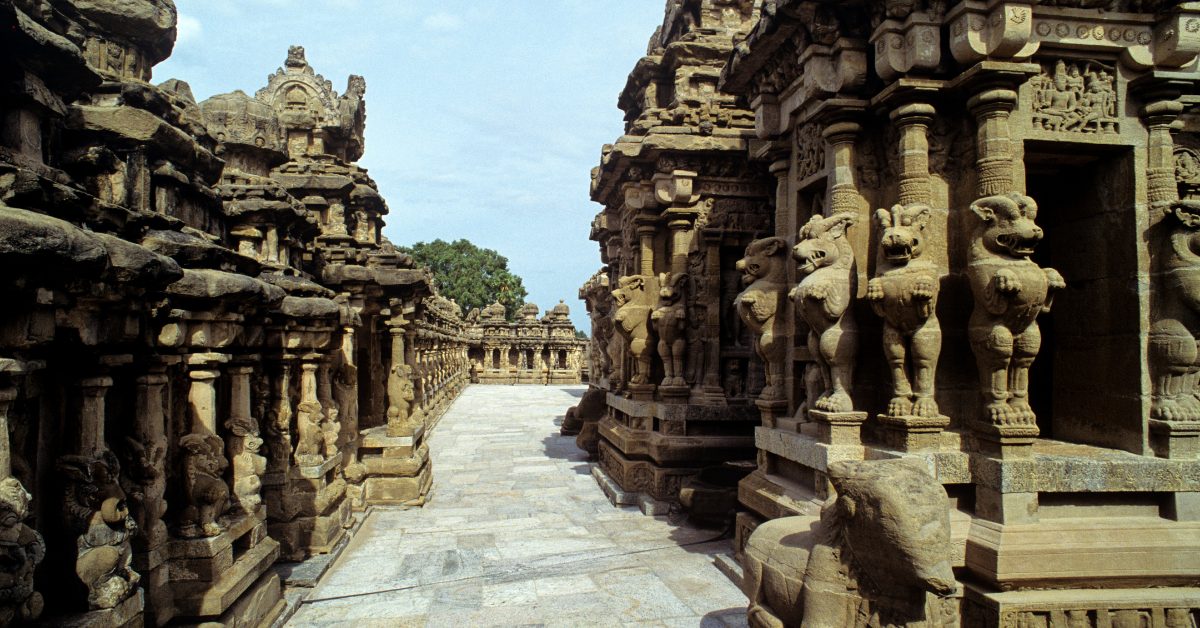Some of the most awe-inspiring structures around the world are not wonders of modern technology in architecture and engineering. These structures are the product of ancient building practices that are so remarkable we struggle today to understand how they were even dreamed of, let alone erected.
Consider the pyramids in Egypt, or the Parthenon in Greece, all centuries old and built without a single crane, or forklift, or any of the other articles used in modern construction. Another of these marvels is the Kailasa Temple in Aurangabad, India, built over the course of approximately 20 years, between 757 and 783 AD.
Kailasa Temple still inspires us after 1200 years
If the temple had been built in the 20th century, with all the modern tools and advances at the disposal of the architect, we would consider it an incredible structure. The fact that the entire thing was carved by hand from one stone, with workers using nothing but chisels and their dedication to the project to inspire them, makes this temple positively breathtaking.
One cannot help but wonder how the men kept going, day after day, carting away more than 200,000 tons of volcanic rock and carving detailed, intricate symbols and animals throughout the five shrines contained inside. Some estimates suggest that as much as two million tons of rock had to be removed. The structure is in the shape of the letter U.

History of the temple
The temple was the realization of a wish of King Krishna of the Rashtrakuta Dynasty, to pay homage to Lord Shiva, who he believed was responsible for his wife recovering from an ailment.
He ordered that the temple be a replica of Shiva’s mystical home in the Himalayas. Those tasked with realizing this wish began at the top of the rock face and worked their way down. Back then, all men had at their disposal was their hands, shovels, and chisels.
The carvings are nothing short of wondrous — elephants and lions, and many carved stories in Sanskrit, accompanied by etched pictures, that archaeologists and others have yet to translate. And while the Kailasa Temple is truly unique, it is not alone on the site; there are 32 structures in total at the Ellora Caves. And it’s not only temples: monasteries are located at the site as well.
The temple is not one of the wonders of the world, as, for example, the Taj Mahal in India is. But in 1983, it received designation as a World Heritage Site.
The world cherishes the temple today, but at one time, many centuries ago, a leader came to power who did not value the Hindu site.
Mughal ruler Aurangzeb wanted it destroyed, but try as his men might, they could not inflict much damage on it. Today, there is some evidence of those attempts, but the temple and its many levels and carvings of animals and mythical creatures are largely unspoiled.
Visiting Kailasa
At the time of writing, India, like most places around the globe, is experiencing surges in COVID-19, and restrictions are in place for those wishing to visit the Ellora Caves.
Although doing so is relatively safe because touring the temple and adjacent buildings means being outdoors, there are, nonetheless, still public health measures in place for travelers and tourists. It’s always best to check with local officials to find out how, and when, to visit the Ellora Caves safely and in keeping with those health guidelines.
Thankfully, the Kailasa Temple will be here long after the coronavirus is in the world’s rearview mirror.
More from us: Dhaskalio Reveals Clues About Ancient Greek Life
It is a testament to humanity’s determination, to our spiritual beliefs and dreams. No matter what one believes, seeing the Kailasa Temple is enough to make one agree that those who built it over those almost 20 years did so because they were inspired — by art, by creativity, and yes, perhaps even by their God.
